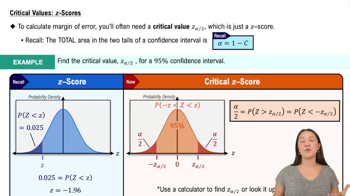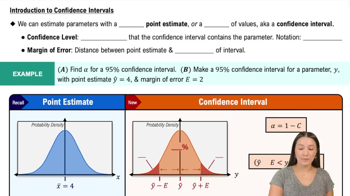Here are the essential concepts you must grasp in order to answer the question correctly.
Levels of Measurement
Levels of measurement refer to the nature of data and dictate the types of statistical analyses that can be performed. The four levels are nominal, ordinal, interval, and ratio. Nominal data categorize without a specific order, ordinal data have a defined order, interval data have equal intervals without a true zero, and ratio data have equal intervals with a true zero.
Recommended video:
Difference in Proportions: Hypothesis Tests Example 1
Ordinal Level
The ordinal level of measurement involves data that can be ordered or ranked, but the differences between data points are not meaningful. For example, survey responses like 'satisfied,' 'neutral,' and 'dissatisfied' can be ranked, but the difference between them is not quantifiable. This level is crucial for understanding data that imply a sequence or order.
Recommended video:
Critical Values: z Scores
Interval and Ratio Levels
Interval and ratio levels of measurement both involve numerical data with meaningful differences between values. Interval data lack a true zero point, such as temperature in Celsius, while ratio data have a true zero, allowing for meaningful ratios, such as weight or height. Understanding these distinctions helps in selecting appropriate statistical methods for analysis.
Recommended video:
Introduction to Confidence Intervals






